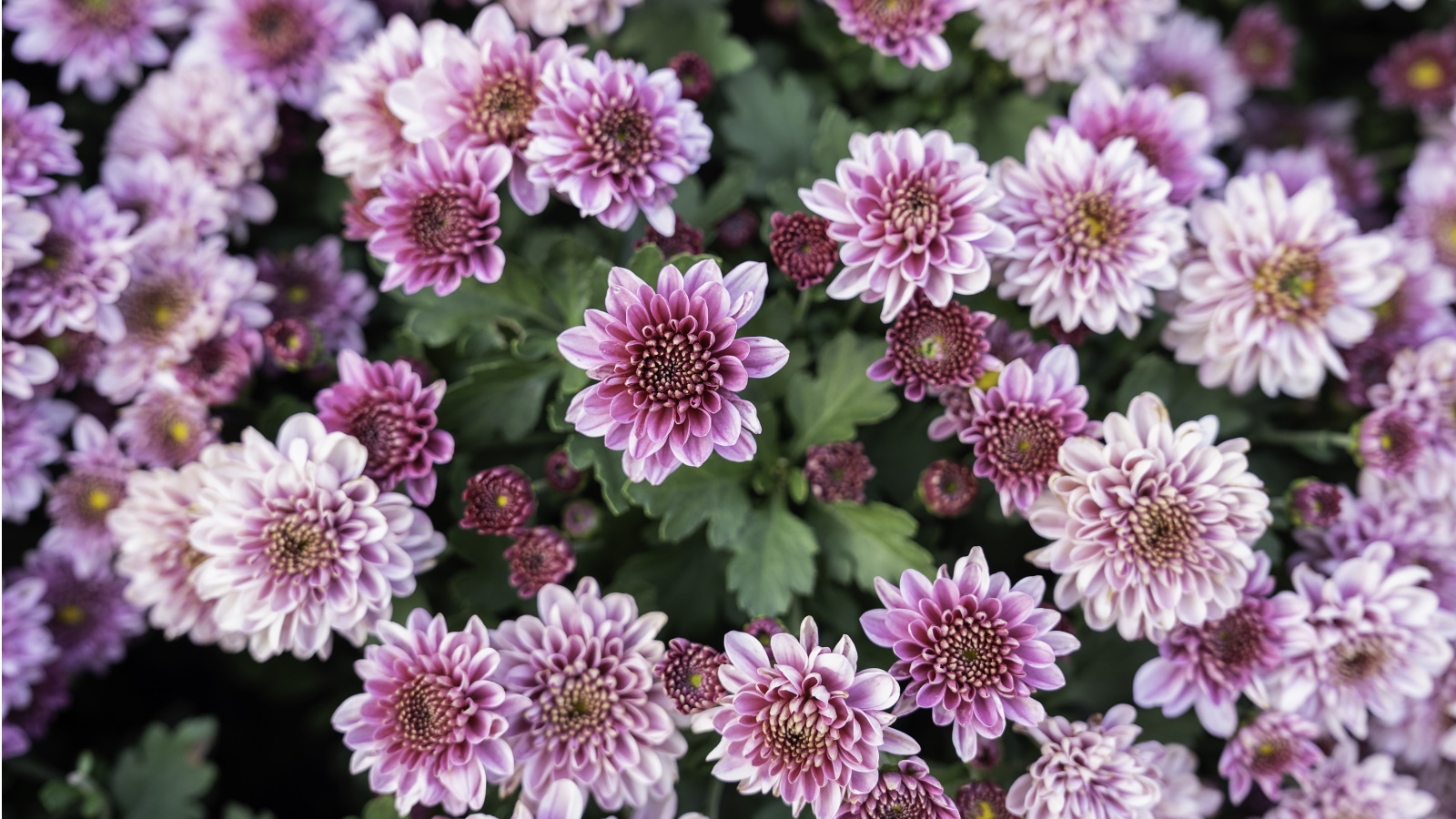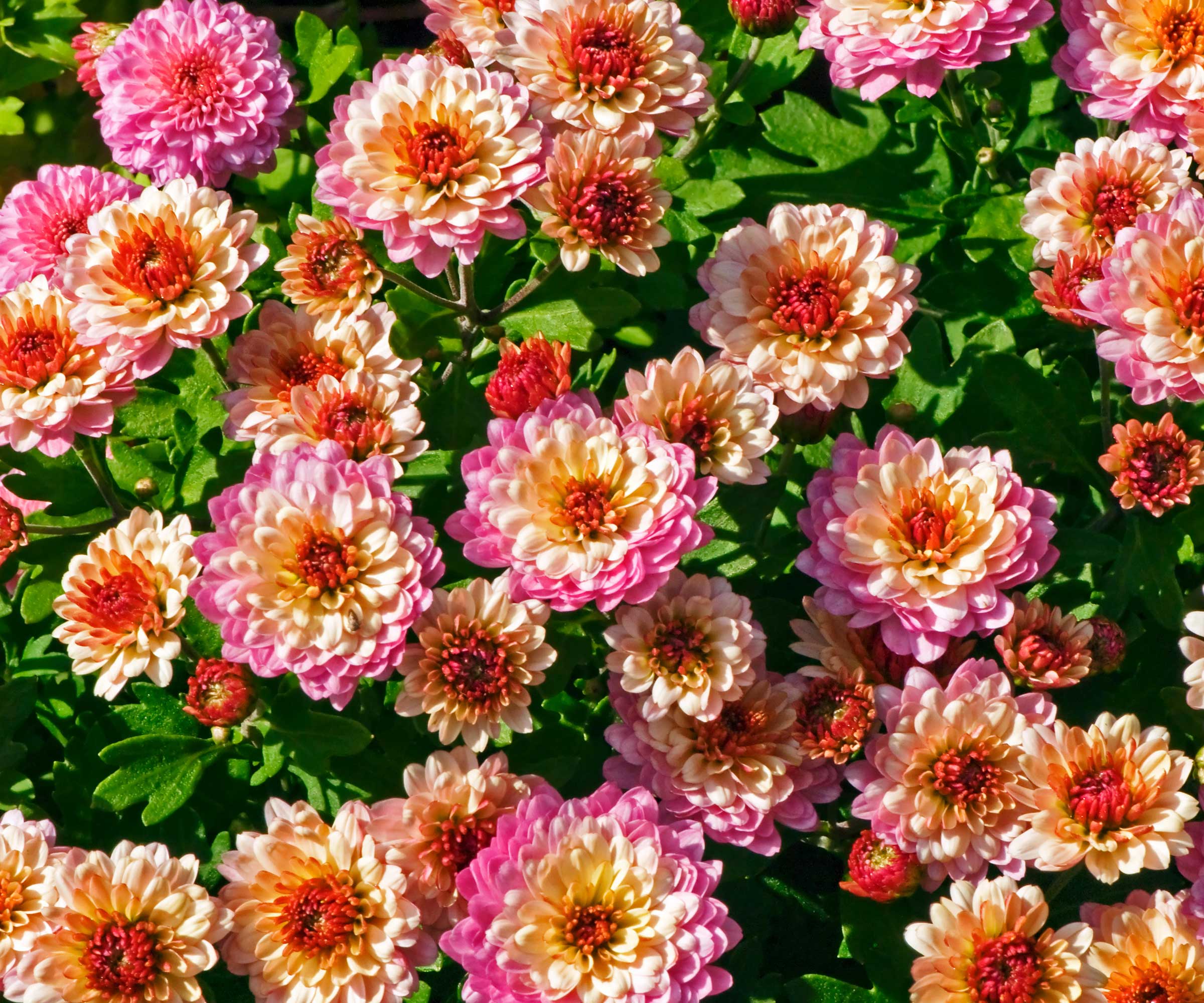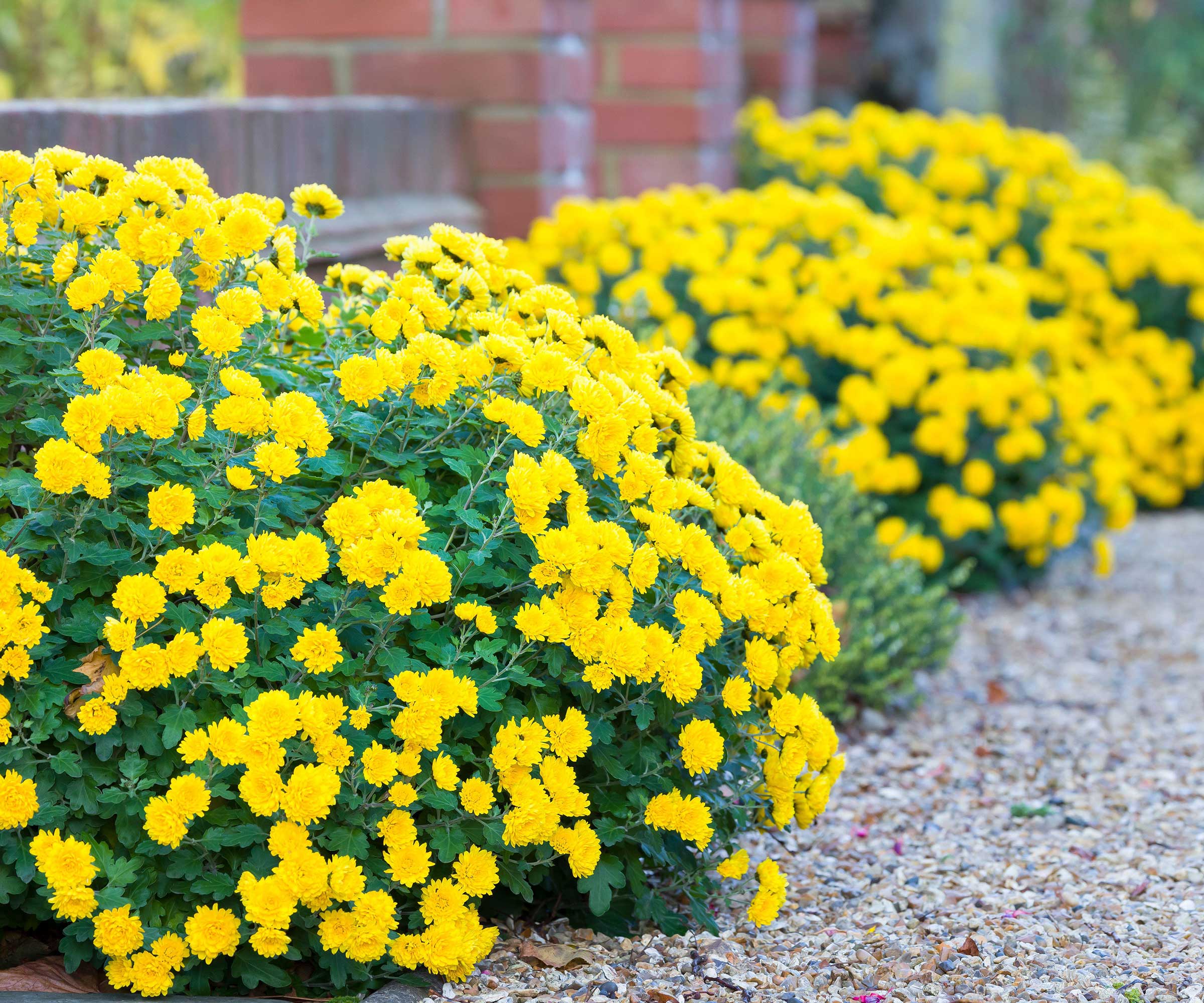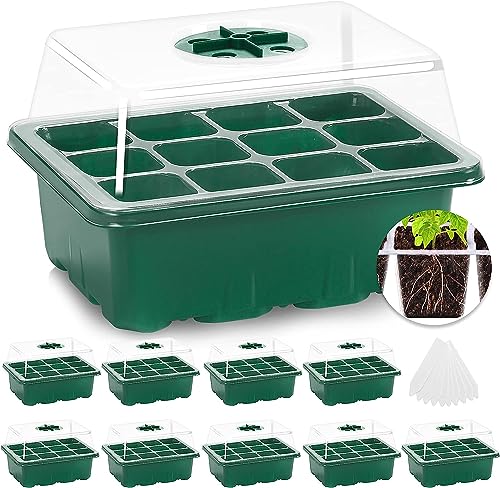How long do chrysanthemums last? Experts reveal when early and late-flowering blooms will emerge
Plant chrysanthemums at different times of the year to enjoy these classic flowers for longer


There are a few flowers that have become classics in flower gardens and chrysanthemums are certainly one of them. 'Mums' come in a wide range of glorious colors and different shapes. No matter which you choose to plant, they're guaranteed to spray bright color across your yard's landscape.
Growing chrysanthemums is simple enough to do, as they're quite low-maintenance once established. They're members of the daisy family and will return each year in your cut flower garden as perennials. But, the one thing you might be unsure of is how long they last for. It can be confusing if you've done some light research into this because these vibrant blooms are divided into early and late-flowerers, meaning you can get chrysanthemum flowers to emerge at different times.
But don't worry, I've spoken to garden experts and broken down exactly when early and late-flowering chrysanthemums bloom and how long they last for.
When do early-flowering chrysanthemums bloom?

If you want to enjoy the wonderful colors and clusters of these traditional flowers towards the end of summer and into fall, you should aim to grow early-flowering mums.
'Chrysanthemums are daylight sensitive and bloom in response to falling daylight hours and temperatures,' explains Meredith Bishop, sustainable flower grower and owner of Bloom and Bounty. 'Early season mums begin to set buds when daylight shortens to 14 hours per day, and they generally bloom around eight weeks later,' she adds.
Generally speaking, this is around early September and you will enjoy a dazzling display of early blooms for around six weeks. Chrysanthemums can be grown across US hardiness zone 5 to zone 9, and in some locations will even bloom from mid-August.
If you are hoping to grow early-flowering chrysanthemums, you should aim to sow seeds indoors four to six weeks before the last spring frost. 'You can then transplant them into the garden after all danger of frost has past,' says Meredith. 'Or, you can sow directly into the garden in spring, though germination is often lower when sowed directly,' she adds.
Design expertise in your inbox – from inspiring decorating ideas and beautiful celebrity homes to practical gardening advice and shopping round-ups.
Some of the best early-flowering chrysanthemum varieties include Chrysanthemum 'Nantyderry Sunshine,' Chrysanthemum 'Misty Cream' and Chrysanthemum 'Allouise.'

Meredith Bishop is a sustainable flower grower specializing in old-world blooms grown from seed in her gardens in urban Nashville, Tennessee. She also operates a retail design studio in Nashville, and enjoys teaching, speaking and writing about all aspects of flower gardening.
When do late-flowering chrysanthemums bloom?

Alternatively, you might want to grow chrysanthemums as one of the best fall flowers for pots. In this case, you should choose late-flowering chrysanthemums, which emerge after the early flowerers and remain into winter.
'Late season varieties bloom toward the end of September or beginning of October and will bloom for a similar period of time of four to six weeks,' says Meredith.
Just like early-flowering mums, you can start late flowering mums indoors and then transplant them. 'Chrysanthemum seeds require about 16 weeks to start blooming,' notes horticulture expert and founder of Yardwork, Michael Clarke. 'We recommend planting seeds for late-flowering varieties in late May-early June.' he adds.
Some of the best late-flowering chrysanthemum varieties include Chrysanthemum ‘Daniel Cooper,' Chrysanthemum 'Starlet' and Chrysanthemum 'Jante Wells.'
Whether you're choosing to grow early or late-flowering chrysanthemums, make sure to avoid seed sowing mistakes to ensure successful germination and growth.

Michael Clarke is the founder of Yardwork and Pulled, the online platforms for everything home and garden. He has a degree in landscape architecture and horticulture from the University of California Davis.
Grow chrysanthemums at home
FAQs
Should you deadhead chrysanthemums after flowering?
Chrysanthemums are gorgeous perennial flowers that will return year-on-year. For this reason, it's important to deadhead mums in fall as their flowers fade. Deadheading will also keep your chrysanthemum plants looking neat and prepare them for the coldest seasons before reblooming in late-summer.
How do you make chrysanthemums bloom for longer?
There are a number of things you can do to keep chrysanthemums blooming.
'For an extended bloom period, keep them out of direct sunlight, as it fades flowers more quickly. Sunlight is needed for the buds to open, but shade is preferable once the blooms are mature,' says Meredith Bishop, sustainable flower grower and owner of Bloom and Bounty.
Likewise, you should take care not to water mums incorrectly if you want them to bloom for longer. 'Since they are susceptible to aphids and mildew, we recommend only watering them at the soil level and not using overhead irrigation,' says horticulture expert and founder of Yardwork, Michael Clarke.
Typically, you can enjoy chrysanthemum blooms for several weeks, but it's important to note that it will also depend on things like your local climate and how early frosts kick in. You can also encourage more blooms in the same season, Michael notes. 'To promote additional blooms and fuller plants, you can pinch about 3/4 of an inch from each branch when the plants are six inches tall,' he says.
Once you have successfully grown chrysanthemums and your plants have established well, take the time to winterize mums to keep them healthy through the coldest point of the year. You'll then see them return in the next growing season.

Tenielle is a Gardens Content Editor at Homes & Gardens. She holds a qualification in MA Magazine Journalism and has over six years of journalistic experience. Before coming to Homes & Gardens, Tenielle was in the editorial department at the Royal Horticultural Society and worked on The Garden magazine. As our in-house houseplant expert, Tenielle writes on a range of solutions to houseplant problems, as well as other 'how to' guides, inspiring garden projects, and the latest gardening news. When she isn't writing, Tenielle can be found propagating her ever-growing collection of indoor plants, helping others overcome common houseplant pests and diseases, volunteering at a local gardening club, and attending gardening workshops, like a composting masterclass.


